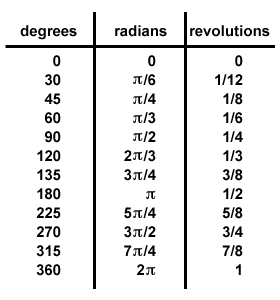Please wait while we process your payment
If you don't see it, please check your spam folder. Sometimes it can end up there.
If you don't see it, please check your spam folder. Sometimes it can end up there.
Please wait while we process your payment

By signing up you agree to our terms and privacy policy.
Don’t have an account? Subscribe now
Create Your Account
Sign up for your FREE 7-day trial
By signing up you agree to our terms and privacy policy.
Already have an account? Log in
Your Email
Choose Your Plan
Individual
Group Discount
Save over 50% with a SparkNotes PLUS Annual Plan!
 payment page
payment page
Purchasing SparkNotes PLUS for a group?
Get Annual Plans at a discount when you buy 2 or more!
Price
$24.99 $18.74 /subscription + tax
Subtotal $37.48 + tax
Save 25% on 2-49 accounts
Save 30% on 50-99 accounts
Want 100 or more? Contact us for a customized plan.
 payment page
payment page
Your Plan
Payment Details
Payment Summary
SparkNotes Plus
You'll be billed after your free trial ends.
7-Day Free Trial
Not Applicable
Renews July 7, 2025 June 30, 2025
Discounts (applied to next billing)
DUE NOW
US $0.00
SNPLUSROCKS20 | 20% Discount
This is not a valid promo code.
Discount Code (one code per order)
SparkNotes PLUS Annual Plan - Group Discount
Qty: 00
SparkNotes Plus subscription is $4.99/month or $24.99/year as selected above. The free trial period is the first 7 days of your subscription. TO CANCEL YOUR SUBSCRIPTION AND AVOID BEING CHARGED, YOU MUST CANCEL BEFORE THE END OF THE FREE TRIAL PERIOD. You may cancel your subscription on your Subscription and Billing page or contact Customer Support at custserv@bn.com. Your subscription will continue automatically once the free trial period is over. Free trial is available to new customers only.
Choose Your Plan
This site is protected by reCAPTCHA and the Google Privacy Policy and Terms of Service apply.
For the next 7 days, you'll have access to awesome PLUS stuff like AP English test prep, No Fear Shakespeare translations and audio, a note-taking tool, personalized dashboard, & much more!
You’ve successfully purchased a group discount. Your group members can use the joining link below to redeem their group membership. You'll also receive an email with the link.
Members will be prompted to log in or create an account to redeem their group membership.
Thanks for creating a SparkNotes account! Continue to start your free trial.
We're sorry, we could not create your account. SparkNotes PLUS is not available in your country. See what countries we’re in.
There was an error creating your account. Please check your payment details and try again.
Please wait while we process your payment

Your PLUS subscription has expired
Please wait while we process your payment
Please wait while we process your payment

Measuring Angles
There are three units of measure for angles: revolutions, degrees, and radians. In trigonometry, radians are used most often, but it is important to be able to convert between any of the three units.
A revolution is the measure of an angle formed when the initial side rotates all the way around its vertex until it reaches its initial position. Thus, the terminal side is in the same exact position as the initial side. In trigonometry, angles can have a measure of many revolutions--there is no limit to the magnitude of a given angle. A revolution can be abbreviated "rev".
A more common way to measure angles is in degrees. There are 360 degrees in one
revolution. Degrees can be subdivided, too. One degree is equal to 60
minutes, and one minute is equal to 60 seconds. Therefore, an angle
whose measure is one second has a measure of  degrees. When
perpendicularity is discussed, it is most
often defined as a situation in which a 90 degree angle exists. Often degrees
are used to describe certain triangles, like
30-60-90 and
45-45-90 triangles. As previously mentioned,
however, in most cases that concern trigonometry, radians are the most useful
and manageable unit of measure. Degrees are symbolized with a small superscript
circle after the number (measure). 360 degrees is symbolized 360o.
degrees. When
perpendicularity is discussed, it is most
often defined as a situation in which a 90 degree angle exists. Often degrees
are used to describe certain triangles, like
30-60-90 and
45-45-90 triangles. As previously mentioned,
however, in most cases that concern trigonometry, radians are the most useful
and manageable unit of measure. Degrees are symbolized with a small superscript
circle after the number (measure). 360 degrees is symbolized 360o.
A radian is not a unit of measure that is arbitrarily defined, like a degree.
Its definition is geometrical. One radian (1 rad) is the measure of the
central angle (an angle whose vertex is the center
of a circle) that intercepts an arc whose length is
equal to the radius of the circle. The measure of such an angle is always the
same, regardless of the radius of the circle. It is a naturally occurring unit
of measure, just like Π is the natural ratio of the circumference of a
circle and the diameter. If an angle of one radian intercepts an arc of length
r, then a central angle of 2Π radians would intercept an arc of length
2Πr, which is the circumference of the circle. Such a central angle has a
measure of one revolution. Therefore, 1 rev = 360o = 2Π rad.
Also, 1 rad = ( )o =
)o =  rev.
rev.
Below is a chart with angle measures of common angles in revolutions, degrees, and radians. Any angle can be converted from one set of units to another using the definition of the units, but it will save time to memorize a few simple conversions. It is particularly important to be able to convert between degrees and radians.

Please wait while we process your payment

